Growth and Characterization of Oxides |
|
 |
To investigate the fundamental electronic and magnetic properties of materials, such as strongly correlated complex oxides, high quality crystals must first be fabricated to permit accurate measurement. The most advanced growth method for achieving thin films of these materials is molecular beam epitaxy (MBE), which builds crystals atomic layer by atomic layer by thermally evaporating the crystal’s constituent elements. Epitaxial growth is achieved in…more |
Crystalline Oxides on Semiconductors |
|
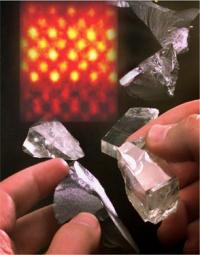 |
Thin film perovskite oxides (chemical formula ABO3) present a rich and diverse set of phenomena. One major challenge for mainstream applications of these diverse properties is integration with single crystal silicon. We have developed a number of processes for growing these oxides on diverse semiconductors, including gallium arsenide, silicon, and germanium. The key challenge to this approach is…more |
Ferroelectric Coupling to Conducting Channels |
|
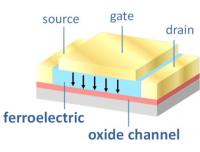 |
The rich phase diagrams of complex oxides include first-order phase boundaries where large changes in properties, such as conductivity, can be achieved by switching the material through the phase transition. The combination of the ferroelectric field effect and novel mechanisms of conduction in complex oxides provides a route to a new family of logic and memory devices with attributes such as non-volatility, re-configurability, radiation hardness, and low power consumption. Non-volatile switching is accomplished using a complex oxide ferroelectric gate (e.g. PbZr0.2Ti0.8O3, BaTiO3, etc.)…more |
Picoscale Engineering of Correlated Advanced Nanomaterials |
|
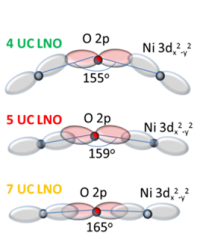 |
Materials with strong electronic correlations (such as complex transition metal oxides) produce some of the most interesting condensed matter phenomena, including magnetism, metal-insulator transitions, and high-temperature superconductivity. In our group, we leverage the power of molecular beam epitaxy (MBE) to manipulate the quantum phases of such correlated systems. By growing ultrathin films and heterostructures with atomic precision and employing synchrotron-based x-ray techniques, we seek to understand the physics of correlated oxides, control their electronic/magnetic properties, and induce new quantum phases…more |
Synchrotron Structures of Interfaces |
|
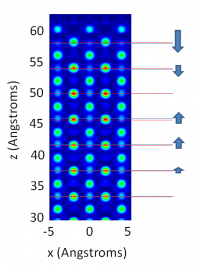 |
The study of the relationship between structure and properties in materials is a longstanding paradigm in material physics. In oxide materials, it has been demonstrated that picometer distortions of an otherwise perfect structure can have dramatic consequences on the electronic and magnetic properties. This sensitivity to structure is especially important at interfaces that are only a few atomic layers thick. Because of the small volume of material at an interface, we use the powerful synchrotron x-ray sources available at the National Laboratories to perform diffraction from the interfaces. Among the advantages of synchrotron studies over studies with our in-lab Rigaku SmartLab diffractometer include the availability of x-rays with tunable energy (5 keV to 40 keV) and high brightness...more |
X-ray Diffraction and Applications |
|
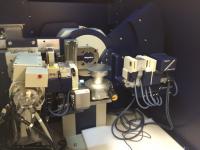 |
The Rigaku Smartlab is a state-of-the-art X-ray diffraction (XRD) multipurpose system used to determine the crystal structure and identify the phases of a wide range of materials. This system uses a high power rotating anode x-ray generator which allows fast data collection and low background noise. It is fully automated, modular and with cross beam optics technology which easily switches between para-focusing (Bragg-Brentano) and monochromatic parallel beam optical geometries…more |